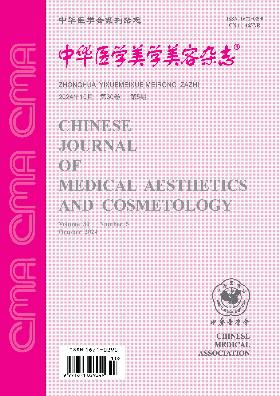Effect of platelet-rich plasma on AnxA1 gene and PPARγ gene of adipose-derived mesenchymal stem cells of rabbit
引用次数: 0
Abstract
Objective To investigate the effect of platelet-rich plasma(PRP) on starting of AnxA1 gene and PPARγ gene of adipose-derived stem cells (ADSCs) in rabbit. Methods Epididymal adipose tissue stem cells from New Zealand white rabbits, and the cells identified by morphology and inducing differentiation, the cells were cultured to the fourth generation, PRP and PPP (platelet-poor plasma) were prepared by traditional centrifugal method from abdominal aortic of rabbit; ADSCs were cultured in culture medium containing PRP (experimental group), PPP (control group) and all medium (blank group) for each 5% for 24 h, 48h and 72 h. Cells of each group were dissociated and total RNA extracted. AnxA1 gene and PPARγ gene were detected by RT-PCR. Results Primary ADSCs of rabbit grew in the way of long spindle swirly. The results of oil red O and alizarin red staining of the ADSCs were positive. AnxA1 gene and PPARγ gene of experimental group significantly increased from the result of RT-PCR (P<0.05). Conclusions PRP can promote proliferation of the ADSCs of rabbit and increase the expression of AnxA1 gene and PPARγ gene significantly. Key words: Platelet-rich plasma; Stem cells; Gene expression; AnxA1 gene; PPARγgene; Adipose-derived mesenchymal stem cells富血小板血浆对兔脂肪间充质干细胞AnxA1基因和PPARγ基因的影响
目的探讨富血小板血浆(PRP)对兔脂肪干细胞(ADSCs) AnxA1基因和PPARγ基因启动的影响。方法提取新西兰大白兔附睾脂肪组织干细胞,经形态学鉴定和诱导分化,培养至第四代,从兔腹主动脉取材,采用传统离心法制备PRP和PPP(血小板-贫血浆);将ADSCs分别在PRP(实验组)、PPP(对照组)和所有培养基(空白组)各占5%的培养基中培养24 h、48h和72 h,分离各组细胞并提取总RNA。RT-PCR检测AnxA1基因和PPARγ基因。结果兔原代ADSCs呈长纺锤形生长。ADSCs的油红O和茜素红染色呈阳性。与RT-PCR结果相比,实验组小鼠的AnxA1基因和PPARγ基因表达显著升高(P<0.05)。结论PRP能促进兔ADSCs的增殖,并显著增加AnxA1基因和PPARγ基因的表达。关键词:富血小板血浆;干细胞;基因表达;AnxA1基因;PPARγ基因;脂肪来源的间充质干细胞
本文章由计算机程序翻译,如有差异,请以英文原文为准。
求助全文
约1分钟内获得全文
求助全文
来源期刊
自引率
0.00%
发文量
4641
期刊介绍:
"Chinese Journal of Medical Aesthetics and Cosmetology" is a high-end academic journal focusing on the basic theoretical research and clinical application of medical aesthetics and cosmetology. In March 2002, it was included in the statistical source journals of Chinese scientific and technological papers of the Ministry of Science and Technology, and has been included in the full-text retrieval system of "China Journal Network", "Chinese Academic Journals (CD-ROM Edition)" and "China Academic Journals Comprehensive Evaluation Database". Publishes research and applications in cosmetic surgery, cosmetic dermatology, cosmetic dentistry, cosmetic internal medicine, physical cosmetology, drug cosmetology, traditional Chinese medicine cosmetology and beauty care. Columns include: clinical treatises, experimental research, medical aesthetics, experience summaries, case reports, technological innovations, reviews, lectures, etc.

 求助内容:
求助内容: 应助结果提醒方式:
应助结果提醒方式:


